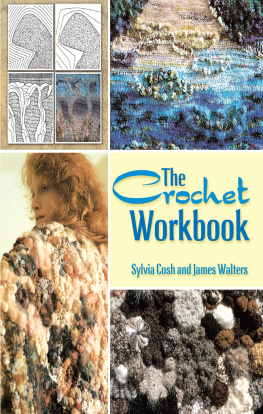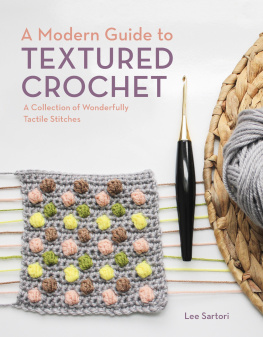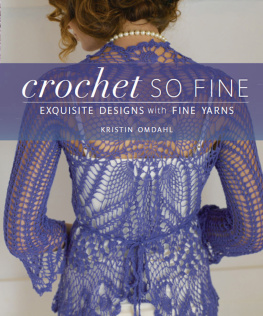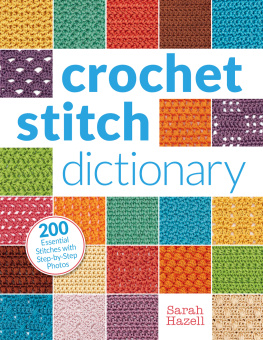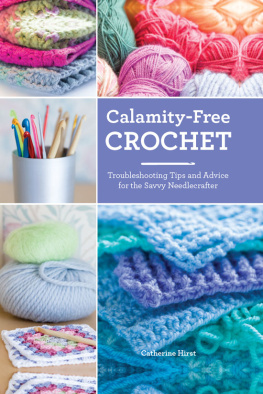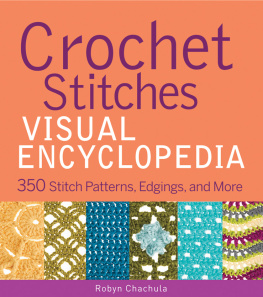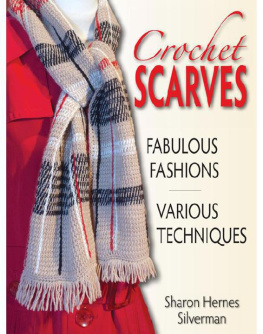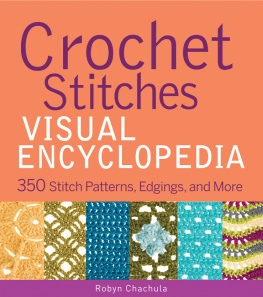The
Corchet
Workbook
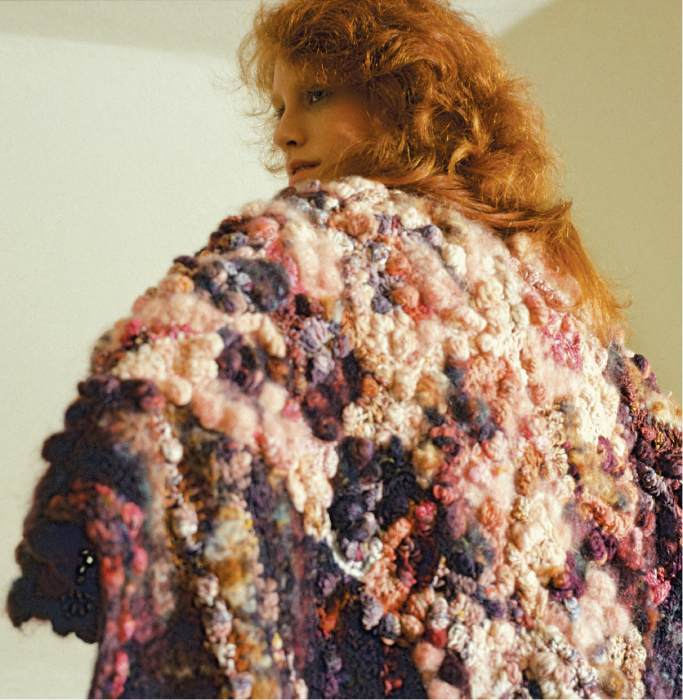
The
Corchet
Workbook
Sylvia Cosh and James Walters
Dover Publications, Inc.
Mineola, New York
Copyright
Copyright 1989 by Sylvia Cosh and James Walters
All rights reserved.
Bibliographical Note
This Dover edition, first published in 2014, is an unabridged republication of the work published in 1989 by St. Martins Press, New York. It was originally published in Great Britain by B. T. Batsford Ltd.
Library of Congress Cataloging-in-Publication Data
Cosh, Sylvia.
The crochet workbook / Sylvia Cosh and James Walters. Dover edition.
p. cm.
Originally published: New York : St. Martins Press, 1989.
Includes index.
eISBN-13: 978-0-486-78304-8
1. CrochetingPatterns. I. Walters, James. II. Title.
TT820.C815 2014
746.43'4dc23
2013035199
Manufactured in the United States by Courier Corporation
49621X01 2014
www.doverpublications.com
Acknowledgement
We would like to thank everyone who has attended our crochet workshops for all the things they have taught us -in particular Delsey Neville for her practical approach to working in the round (method 2). In this book we have included work by Mavis Bell ), look for books by Tony Buzan.
Introduction
This book is intended for people of all ages (and both sexes), for existing crocheters who are looking for a new dimension to their work, and also for people who may never have picked up a crochet hook before. We assume that you will want to experience crochet from the inside and to experiment with it spontaneously and freely from the beginning. (Beginners may not be aware that, in many ways, this is easier, as well as more rewarding, than following conventional pattern instructions or working in the conventional way!)
The word free means many things to us: it refers mainly to freedom from the limitations of the conventional approach and, beyond that, to escape from the restrictions we all unknowingly impose upon ourselves through blind habit, which programmes our thoughts and responses so that they become automatic and so involuntary. Free means being aware, being able to generate new options and to make fresh choices whenever we need. This may sometimes include seeing when a conventional approach will get us to where we want to go, and choosing to go for it!
We do not have the space to show the absolute basics here (these can be easily picked up elsewhere, and it is up to you to do so), but we do give some important guidance for beginners. This is, in any case, not just a manual on crochet techniques, nor is it a pattern book. It is more a personal trip, showing how involvement with crochet can go beyond hooks, stitches and even yarns, and how none of us has to be restricted to reproducing a standard commodity or matching a norm. We hope you will be interested to try our approach and will be entertained by it. Once you have dabbled, however, we also hope you will press on with the main quest for your own personal creativity and individual style.
Lefthanders
Apologies to lefthanders! Since righthanders are in the majority, our drawings have been prepared to suit them. Please be assured, however, that crochet itself has no stupid bias of this kind and does not demand that you do anything in a right-handed way. In most of the important places, we have inserted a miniature mirror-image version of the main illustration, which we hope will help; otherwise, if you can arrange to view the main drawings in a mirror you will see what you should be doing.
US terminology
One area in which the special relationship between Great Britain and North America seems to have fallen apart is that of crochet terminology! Whereas the actual mechanics of crochet are the same for all of us, the names of the stitches are not. Or rather, just to be confusing, the names for the stitches are the same, but seem to have slipped one place in the list and so refer to different stitches (see for a comparative list of terms and abbreviations). It might have been easier if an entirely different set of names had evolved on either side of the Atlantic. This is not really much of a problem, so long as you are aware of the situation. In any case, we have put both expressions in the text whenever possible with the US term in square brackets | |.
Have fun!
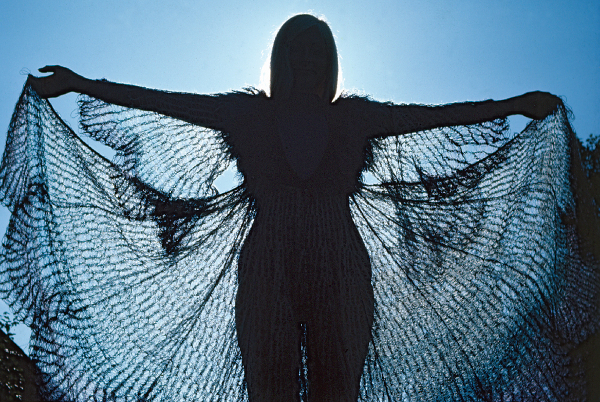
1a, b, c Modem crochet rejoices in colour and texture, whether it be quietly beautiful, or thoroughly lively and exuberant


1
What is crochet?
Traditional and modern crochet
As crochet is such a simple, almost obvious, craft, it is tempting to believe that its origins are as old as mankind. There is very little real evidence, however, that it goes back more than a few hundred years, when it seems to have been the work of nuns. In nineteenth-century Europe there was a vogue for lace, and crochet was found to be a suitable technique for quick and cheap copying of many of the established styles of needle and pillow lace. A cottage industry was started to satisfy demand. Eventually the fashions changed, and by the time of the First World War crochet had all but disappeared. Before then, particularly in Ireland, some extremely vital, original and amazing work had been created - much of which was characteristically freeform lace .
Nowadays, even when, from time to time, the fashion for fine lace returns, few people are prepared to sit and make it by hand - even in crochet. More often we go for thicker yarns to make crochet knitwear. Crochet is now one of the most instant and affordable ways of making distinctive and personal garments.
Crochet attracts some people because it gives them something to do with their hands. What starts as a hobby, however, can sometimes take over, become totally absorbing and even develop into a passion. Dedicated enthusiasts may undertake immensely time-consuming fine or large-scale work to cover tables, beds, walls or even windows .
As it requires no loom, wheel, or other heavy equipment, and is one of those crafts which works very well as patchwork, crochet is highly portable and convenient for people on the move. It is also wonderful for co-operative group projects in schools and other communities.
Some people treat crochet as an art, a medium of personal creativity and self-expression. They use it for yarn paintings, hangings and soft sculptures, but not for anything practical, except perhaps wearable art . More people are being drawn to take crochet up now what will it become in their hands?
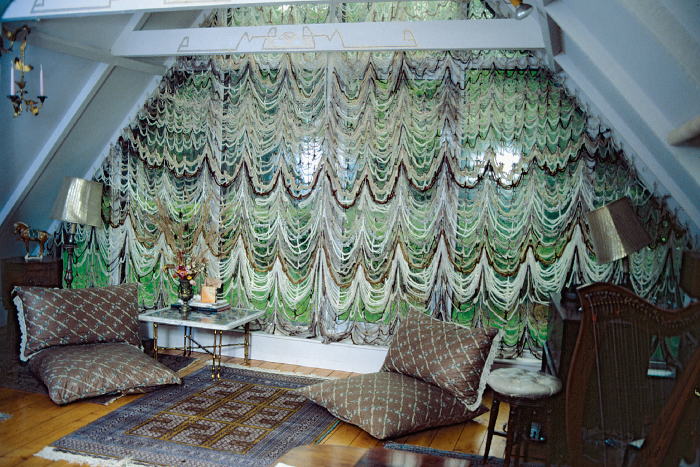
2 The design of this window hanging was suggested by the shape, subtle patterns and natural colours of a moths closed wings. It was a challenge to fit this almost 5m
Next page
